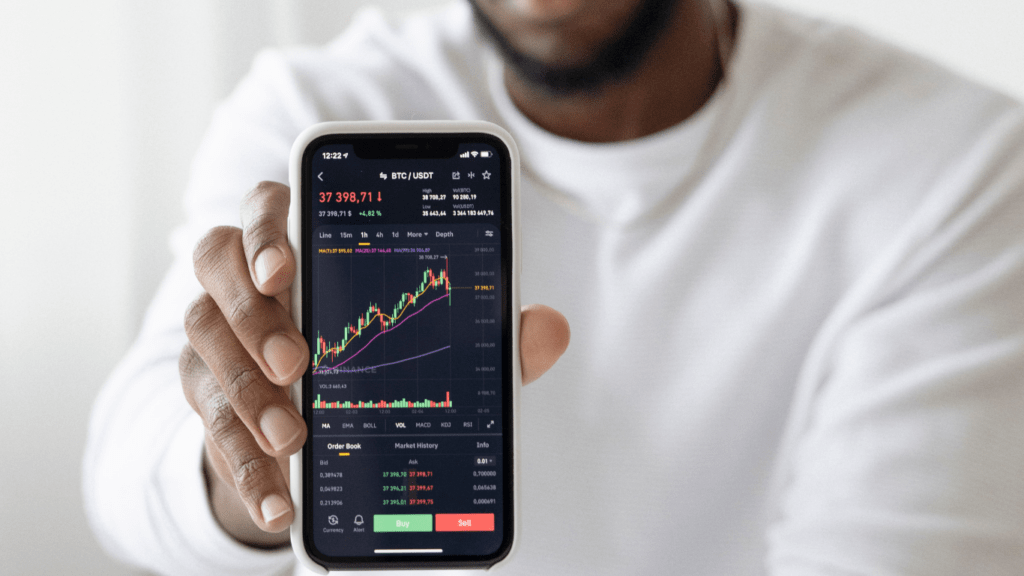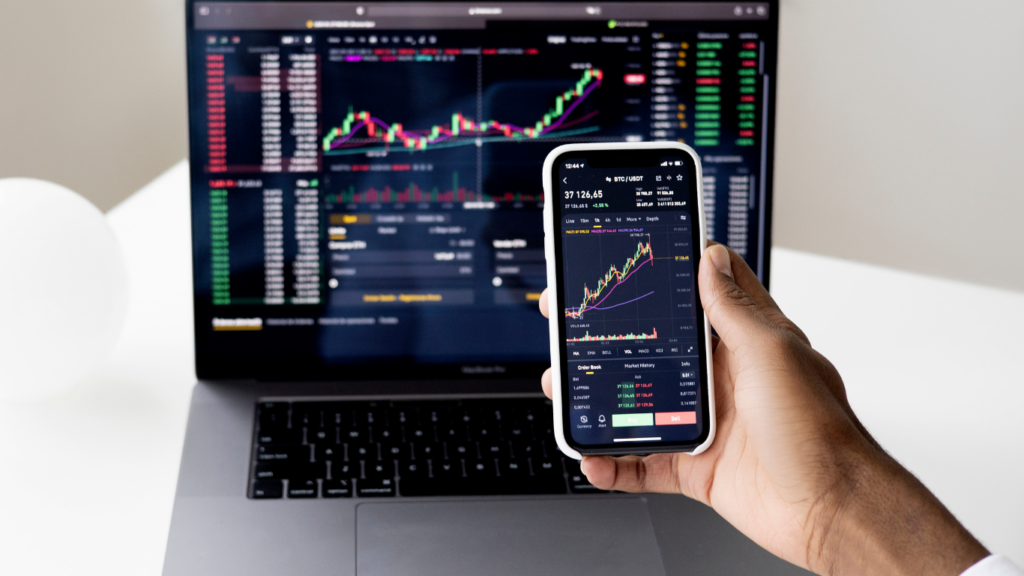Understanding Momentum Trading
Momentum trading capitalizes on securities’ continuance of existing trends. Investors buy assets showing upward momentum and sell those on a downtrend.
Definition of Momentum Trading
Momentum trading involves buying stocks that show an upward trajectory and selling those declining. This strategy relies on the idea that once a price trend is established, it is more likely to persist for some time. It’s rooted in the belief of herding behavior, where investors follow prevailing directions.
History and Evolution
Momentum trading dates back to the early 19th century, beginning with traders noticing recurring trends. Over time, it gained sophistication through technological advancements. In the 1990s, academic research recognized its profitability, leading to further refinements with modern tools and algorithms. Today, it’s a part of quantitative trading strategies, leveraging data-driven insights.
The Mechanics of Momentum Trading

Momentum trading operates on tapping into the power of established trends. Understanding how to effectively execute this strategy is essential for enhancing portfolio performance.
Identifying Trends
Identifying trends in momentum trading requires recognizing price movement patterns. I examine historical data to spot securities with strong recent performance. Using tools like moving averages and relative strength indicators, I assess which stocks exhibit potential sustained upward or downward trends. Consistent monitoring allows me to make informed decisions when entering or exiting positions.
Timing the Market
Timing the market entails entering trades at optimal phases of a trend. I capitalize on price momentum by buying when upward trends clear certain thresholds and selling when downward trends appear irreversible. Technical indicators such as breakout levels and volume analysis give me precise entry and exit points. This precision in timing ensures trades align with momentum, optimizing the potential for gains.
Benefits of Momentum Trading
Momentum trading offers several advantages that can significantly enhance a portfolio. By capitalizing on established trends and market psychology, this strategy presents unique opportunities for investors.
Potential for Higher Returns
Momentum trading provides the potential for higher returns by riding strong price trends. According to research by Jegadeesh and Titman, stocks with past momentum tendencies often continue performing well in the short term. By identifying and investing in these high-momentum stocks, I can capture gains effectively. It’s essential to stay informed and execute timely trades, aligning my strategy with prevailing trends to maximize profitability.
Flexibility in Various Markets
This strategy’s adaptability allows me to apply it across different asset classes and market conditions. Whether trading equities, commodities, or currencies, momentum trading offers flexibility, enabling me to profit from diverse market environments. Adaptation involves modifying my approach based on market volatility and liquidity, ensuring optimal application of momentum principles. This versatility enhances my portfolio’s resilience, helping navigate varying economic cycles while pursuing consistent returns.
Risks and Challenges
Momentum trading, while promising, comes with its share of risks and challenges. Understanding these aspects is crucial for leveraging the strategy effectively.
Market Volatility
Market volatility can significantly impact momentum trading.
Rapid price movements can lead to unexpected losses if trends reverse swiftly. In highly volatile markets, stocks may exhibit false breakouts, leading traders to chase trends that quickly dissipate. I often use stop-loss orders to protect my investments and reduce risk in unpredictable conditions. This tool helps manage potential losses by automating my exit from trades that deviate from the anticipated trajectory.
Emotional Decision-Making
- Emotional decision-making presents a challenge in momentum trading.
- The inclination to react impulsively to price swings can lead to poor trading decisions.
- Fear of missing out might result in premature entries, while panic can trigger untimely exits.
- To mitigate these risks, I rely on established trading plans and pre-defined criteria for trade execution.
By adhering to disciplined strategies, I maintain objective decision-making, minimizing the influence of emotions on my portfolio.
Strategies to Enhance Momentum Trading
Implementing effective strategies significantly boosts the performance of momentum trading. By leveraging technical analysis and risk management, I can enhance my trading approach.
Technical Analysis Tools
Technical analysis underpins successful momentum trading. I rely on tools like moving averages to track price trends, simplifying the identification of entry and exit points. Calculating the moving average provides a smoothed line that reveals the overall direction of a stock’s momentum, helping me pinpoint potential buying or selling opportunities. Relative Strength Index (RSI) acts as another vital tool, measuring speed and change of price movements. This oscillator indicates overbought or oversold conditions, enabling me to anticipate trend reversals. Implementing these tools allows me to capitalize on sustained price movements while safeguarding against abrupt shifts.
Diversification and Risk Management
Balancing momentum with diversification and risk management solidifies my strategy. Diversifying across asset classes—stocks, bonds, and commodities, for example—mitigates risks associated with market volatility. Spreading investments prevents overexposure to any single asset, steadying my portfolio during unpredictable periods. Stop-loss orders stand crucial in managing risks, as they limit potential losses by automatically selling a security when it reaches a particular price. By integrating diversification with diligent risk management practices, I enhance my ability to navigate fluctuating markets, thereby reinforcing my momentum trading outcomes.

 Caitlin Grove brought her expertise in communication and content strategy to Funds Fortune Roll, crafting engaging and educational articles that resonate with a diverse audience. Her ability to break down sophisticated financial concepts into relatable and actionable advice has helped the platform connect with both novice and seasoned investors. Caitlin's dedication to delivering high-quality content has been instrumental in the success of Funds Fortune Roll.
Caitlin Grove brought her expertise in communication and content strategy to Funds Fortune Roll, crafting engaging and educational articles that resonate with a diverse audience. Her ability to break down sophisticated financial concepts into relatable and actionable advice has helped the platform connect with both novice and seasoned investors. Caitlin's dedication to delivering high-quality content has been instrumental in the success of Funds Fortune Roll.